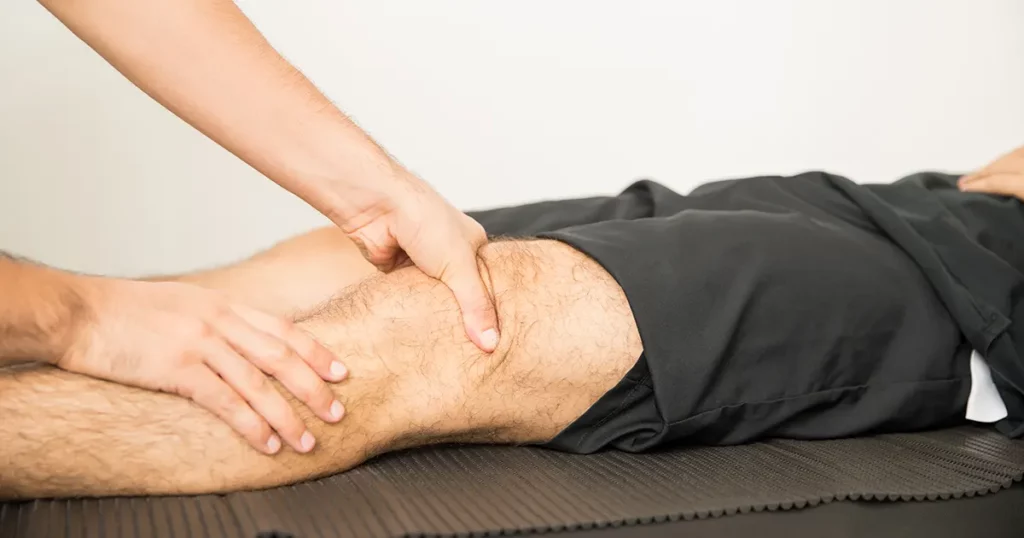Hamstring strains are caused by a rapid contraction, usually when the leg is extending or a violent stretch of the hamstring muscle group which causes a high mechanical stress. This results in varying degrees of rupture within the fibers of the muscle-tendon unit. Hamstring strains are most common among sports that require a high degree of speed, power and agility such as soccer, basketball, tennis, sprinting and rugby.
THE ANATOMY
Located on the back of the thigh, the hamstring is a group of three separate muscles: biceps femoris, semimembranosus and semitendinosus. The top of these muscles is attached to the pelvis and hip, and the bottom of the hamstring muscle are attached to the tibia just below the knee joint. The action of the hamstring muscles is to flex (bend) the knee and extend (straighten) the hip.
THE INJURY
Hamstring strains are classified from Grade 1-3 depending on their severity. A hamstring strain may occur in one or more of the 3 hamstring muscles.
THE MANAGEMENT
The immediate treatment of any soft tissue injury consists of the RICER protocol – rest, ice, compression, elevation and referral. The RICE protocol should be followed for 48–72 hours. The aim is to reduce the bleeding and damage in the muscle. The muscle should be rested in an elevated position with an ice pack applied for 20 minutes every two hours (never apply ice directly to the skin). A correctly sized compression bandage should be applied to limit bleeding and swelling in the injured area. During this time, the No HARM protocol should also be applied – no heat, no alcohol, no running or activity, and no massage. This will ensure decreased bleeding and swelling in the injured area. Following this acute phase, a physical therapist will start to work on soft tissue and manual mobilisation, with the goal being to slowly improve tissue flexibility and mobility and promote good tissue healing and scar formation. Strength exercises and neural mobilisation exercises will gradually be introduced. Correcting muscle imbalances, proprioception, muscle endurance and sports specific techniques may also be addressed.
Time frames for rehabilitation and return to sport vary depending on the nature and severity of the strain.
Grade 1 hamstring strains should be rested from sporting activity for about three weeks.
Grade 2 injuries for a minimum of four to eight weeks.
In the case of a complete rupture (Grade 3), the muscle may have to be repaired surgically and the rehabilitation to follow will take about three months, even up to 6 months to return to full sporting ability.
Premature return to sport and inadequate rehabilitation will increase the risk of re-injury, which is already high anyway. Full stretch and strength should be achieved in addition to the ability to perform full speed training. Remember this is applicable to everyone with a hamstring strain; whether you are a social ‘athlete’ or a professional one. The end stage demands you place on your hamstring may vary from person to person but the principles of recovery and rehabilitation are the same for everyone.
As always, this is not to be taken as medical advice and full extent of a hamstring strain can not be determined without full examination. If you are suffering with hamstring pain or tightness be sure to book in to have a proper examination. Call 0894918007 or book now.





